 |
| Certificate of Excellence | |
| COE Handspinning Master Study | |
| Fiber Pests How to deal with moths and other fiber pests. |
|
| Classes | |
| Spinning Wheel Pictures | |
| Projects | |
| Instructions & Patterns | |
| Fiber Links | |
| Beginner Spindle Lesson The cross country spindle experiment. |
|
| "Straw into Gold" How to spin flax and gold leaf into jewelry. |
|
| Current Studies | |
| Past Studies | |
| Books |
Studies
| Peru-At the Getty 2018, | |
| 1991 HGA Certificate of Excellence in Handspinning (Part 1) Master Study--Chinese Knot Art with Handspun (Part 2)--Gwen Powell | |
| 2012 HGA Convergence, Long Beach California, COE Exhibit | |
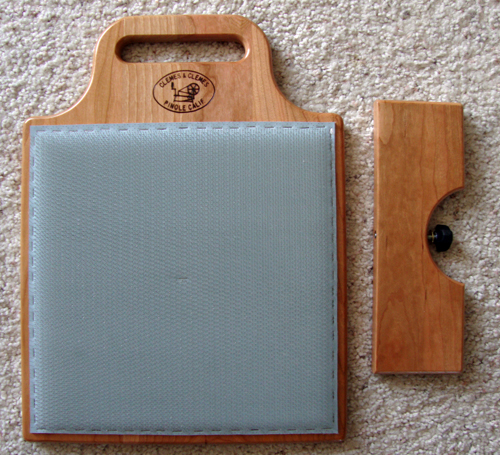 |
The Clemes and Clemes Carding Board YouTube Videos are posted on how to use the board. |
The board is placed on the lap with the handle at your knees. The "keel" can be turned in any direction. There are two bolt holes for the keel that allows for much flexibility. Check back as I post pictures and comments of my study. |
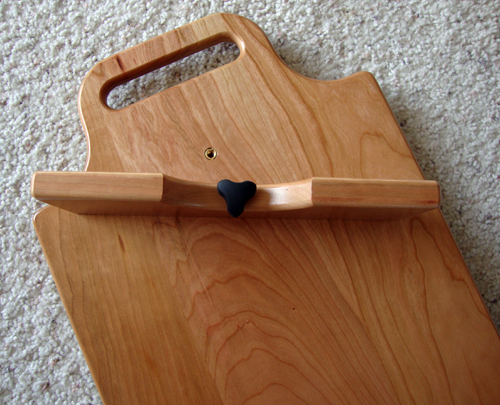 |
 |
The Blending Board is best used with the keel between your legs while sitting comfortably. But, it can also be used on a table. You will need to put a non-slip matt under the board to keep it in place. There are two different settings to alter the angle the board is at. |
White Masham Top from Louet This fiber was given to me because it was somewhat felted together. I carefully pulled the rop apart which loosened it enough to spin. I found this particular fiber to be coarse and suitable for rugs, tapestry and household items. It might be suitable for an outer coat, loop boucle or felting. I would not wear it against my skin. |
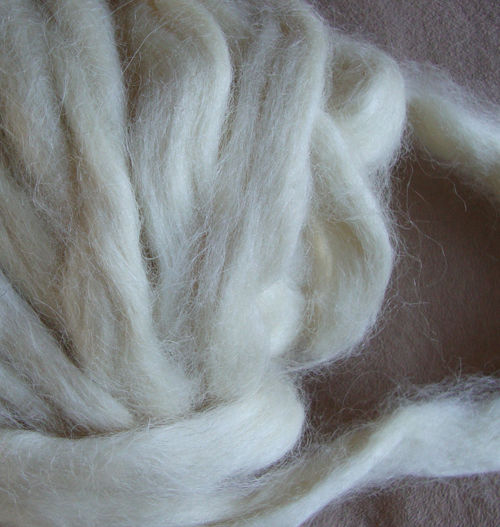 |
I was able to acquire a large sample from two different fleeces from my Ravelry friend Renee living in Sweden. This sample is multicolored with lovely corkscrew locks. Renee said these were not from a handspinning flock and would expect better if it had been. But I found them very nice, medium soft and light luster. The series of pictures to the right show the cut end of the sample. The first picture shows a dark fleece but that was only the butt end that had been sheared. I noted before I began to wash it that the dark pulled right away from the ligth underneath. So I plucked off all the dark. The last pictures shows what the back of the fleece looks like after I plucked out all of the dark. It looks like the sheep was going to either molt naturally or was given a medication to force it to molt. |
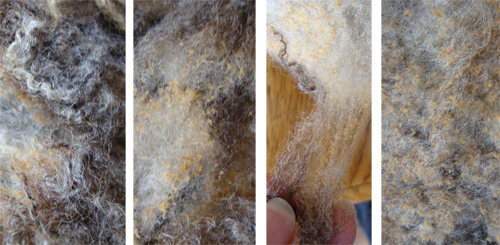 |
To the right is the other fleece. It appeared to have been "plucked" off the sheep with no real cuts. This is the tip end. Note the wonderful ringlets. The "skin" end was slightly felted. |
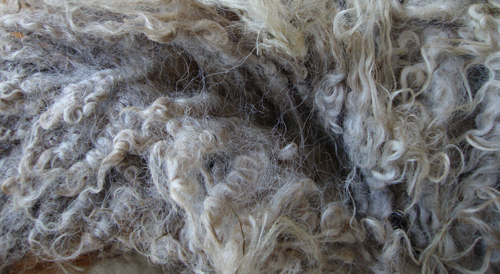 |
| Last Updated 1/23/2018 | |